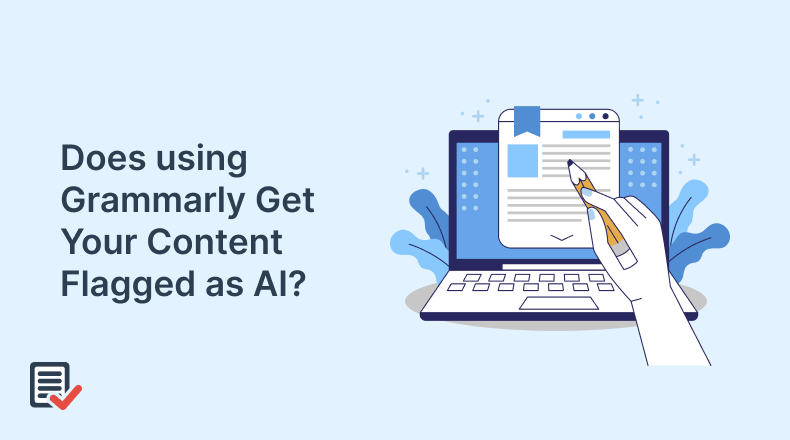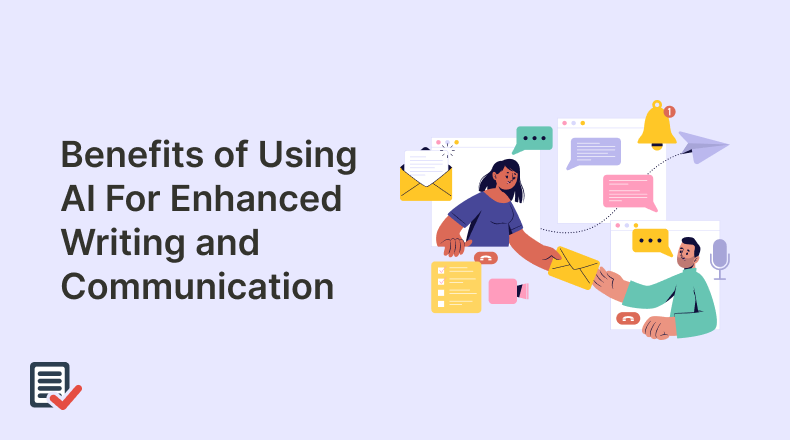
Grammarly, without a doubt, is the most advanced and trusted tool for proofreading. Millions of students, researchers, teachers, professional writers, and business owners use this platform to proofread and edit their content.
Although Grammarly is trusted for content improvement, there are some issues with it as well. Many think that when they proofread and edit their content with Grammarly, their content gets flagged as AI.
In this blog, we will explore whether enhancing content with Grammarly can classify it as AI. But before that, we need to know what Grammarly is.
Understanding Grammarly
Grammarly is a complete proofreading and editing tool. It offers users various online utilities that help them make their content clear, accurate, and readable. Using advanced AI algorithms, it detects multiple types of issues in the content, especially those related to grammar, spelling, punctuation, and clarity.
Additionally, Grammarly allows users to select their goals and objectives. Once you choose your goals, Grammarly will provide suggestions accordingly. In short, it’s a complete proofreading tool for improving content.
Lastly, Grammarly has recently introduced a generative AI feature to help its premium users improve their content with AI. Using this feature, one can efficiently rewrite, improve, expand, shorten, and paraphrase their content within a few moments. Impressively, its generative AI is much better than many well-known platforms. That’s why many users frequently use this feature to brush up on their content.
Is Grammarly’s Content Flagged as AI?
We cannot answer the question with a yes or no. Sometimes, when we proofread and edit content with Grammarly, AI content detectors give it a green light. Other times, they detect AI in the content. Therefore, we must delve deeper to understand why and when it happens.
Cases When Content Doesn’t Get Flagged
1: When Content is Originally Created by Humans
If the content is originally created by a human, not an AI-language model, it will most likely pass any AI test. Human-written content usually reflects unique ideas, perspectives, and styles that are less likely to get flagged as AI, even if you proofread and edit it with Grammarly. So make sure to adopt credibility and trustworthiness in content.
2: When There is Consistency in Content’s Tone
Generally, if AI content detectors find inconsistencies in the content, they flag it as AI. When you proofread and edit your content with Grammarly, make sure not to change the content style and voice. This can eventually help you avoid false positives and make your content look unique and human-written.
3: When It’s Not Heavily Edited with Grammarly
Sometimes, writers don’t manually proofread their content. They paste the text into Grammarly and approve all the suggestions provided by the tool. Make sure to avoid this practice. Whenever you proofread content, thoroughly read it, even the sentences with no suggestions, and only accept suggestions that you think are accurate according to the content and context.
4: When the content has a natural flow
Content without a flow usually gets detected as AI. Some AI detectors check for content flow and coherence and decide if it’s written by artificial intelligence. When proofreading content with Grammarly, if you don’t make many changes to the content flow and keep it natural, your content will likely get passed by AI detectors.
Cases When Content Gets Flagged
1. When Writers Solely Rely on Grammarly Suggestions
Many writers don’t take the time to proofread their work manually. They unquestioningly accept Grammarly’s suggestions without checking whether they’re accurate or not. Yes, Grammarly is an outstanding tool, but not all of its suggestions are correct. If you follow its recommendations, particularly those regarding clarity, engagement, and delivery, your content might sound mechanical, and AI text detectors might detect it as AI.
2. When Writers Use Grammarly’s Generative AI
Grammarly has developed its generative AI to assist users in rewriting their content according to their needs and preferences. This generative AI can help users polish their content, but it can also enhance the chances of AI plagiarism. Therefore, writers should avoid excessively using this feature and only use it when required.
3. When Users Check Content with Unreliable Tools
Lastly, not all AI detectors are trustworthy. Many times, they show false positives in the content. Also, in some cases, they don’t detect AI in the content created by AI-language models. So, sometimes, the problem is not with Grammarly or any other proofreading tool; it’s with the AI detectors.
How to Avoid AI Plagiarism?
When proofreading and editing a piece of content, people must avoid accepting all the suggestions provided by Grammarly or any other tool they use for proofreading. Every writer has their own writing style and uses the language accordingly. However, proofreading tools sometimes provide suggestions that ruin the content tone and make it sound robotic. Therefore, you should only accept the suggestions that you find correct and ignore all others.
Also, it can help if you avoid using Grammarly’s generative AI. When the content is created or paraphrased by AI, an AI detector can quickly trace it and flag it as AI. Therefore, it’s better to trust and enhance your writing prowess than any AI tool.
Final Words:
Grammarly itself isn’t a bad tool at all and doesn’t bring AI into content. However, its misuse creates such issues. So, you can use this tool without any worries. But, make sure you don’t excessively use its generative AI feature.





